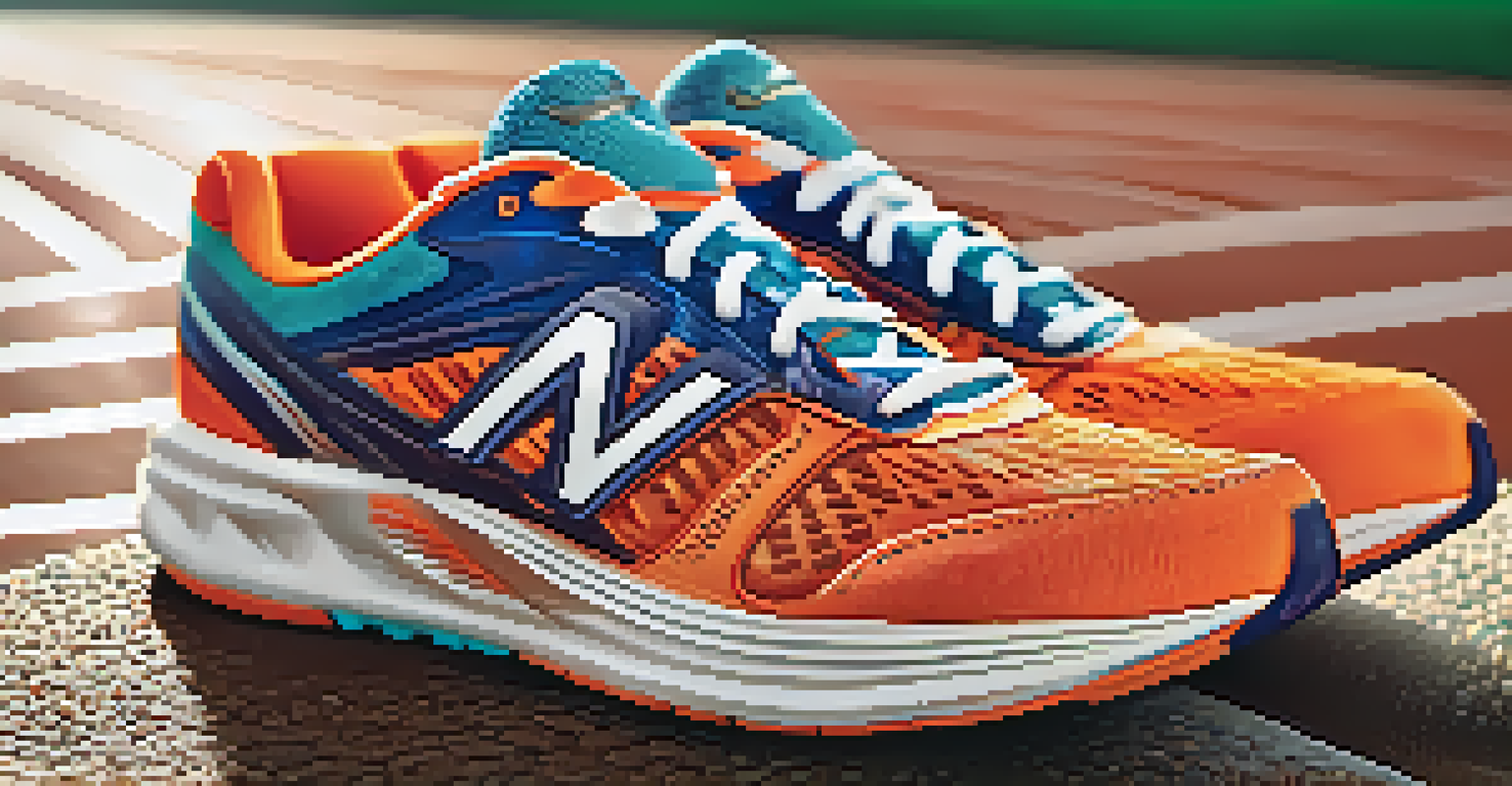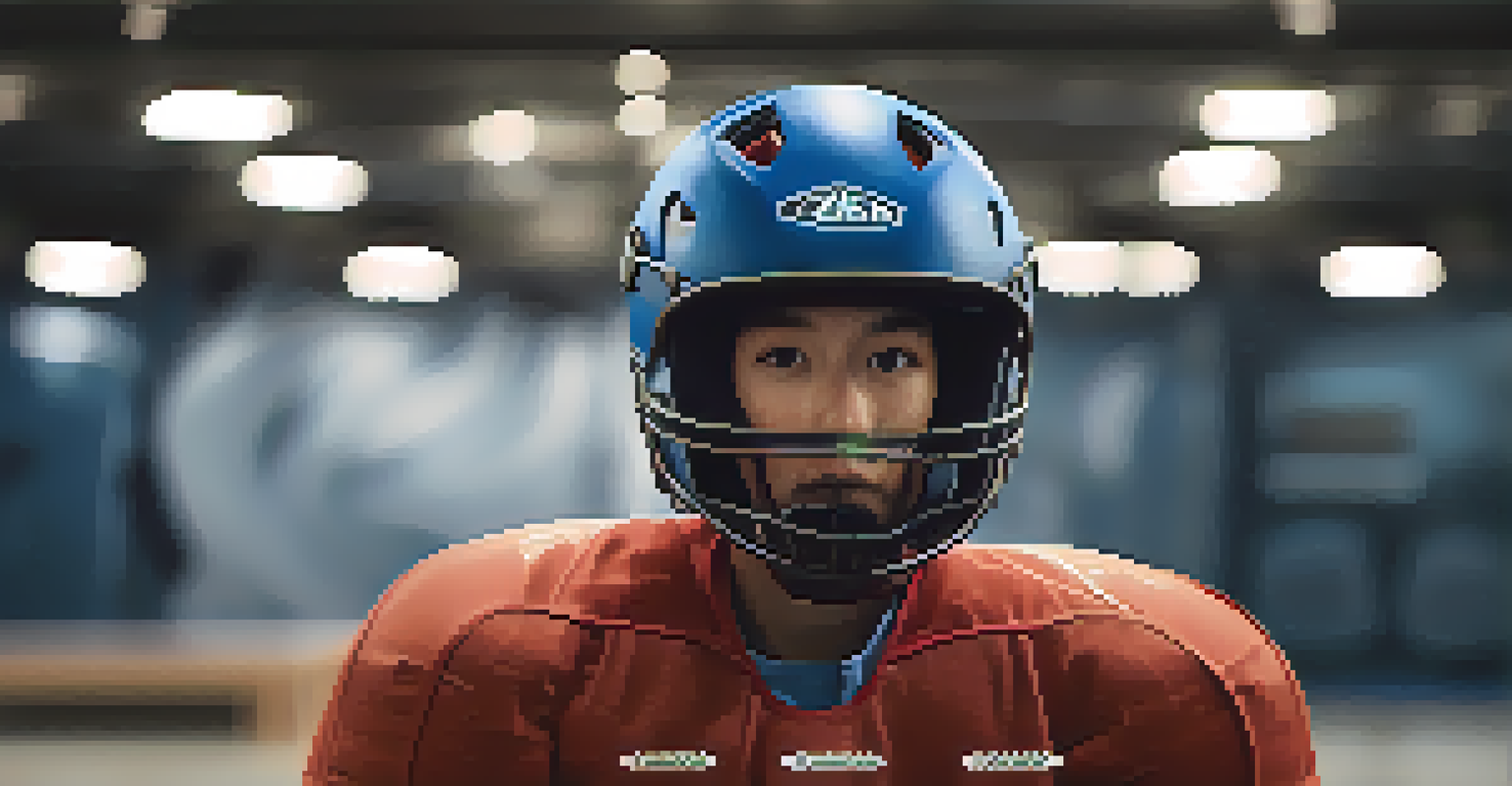How to Choose the Right Sports Equipment for Injury Prevention

Understand Your Sport and Its Demands
Every sport comes with its own set of physical demands and potential risks. For example, runners need shoes that provide good cushioning and support, while football players might prioritize helmets and pads for protection. Understanding the specific requirements of your sport is the first step in selecting the right equipment.
The difference between a successful person and others is not a lack of strength, not a lack of knowledge, but rather a lack in will.
Consider the intensity and type of movements involved in your chosen activity. This will help you determine the kind of protection and support you need. For instance, a cyclist might need a sturdy helmet and padded shorts, whereas a swimmer will focus more on swimwear that enhances performance without compromising safety.
Taking the time to research your sport not only helps in injury prevention but also enhances your performance. When you choose equipment tailored to your sport's demands, you set yourself up for success and reduce the likelihood of injuries.
Prioritize Quality and Safety Standards
When it comes to sports equipment, quality matters. Investing in high-quality gear that meets safety standards can significantly reduce your risk of injury. Look for products that have been tested and certified by relevant organizations, ensuring they provide the protection they claim.

Consider the materials used in the equipment as well. Durable and breathable fabrics, for example, can enhance comfort and performance while reducing the chance of chafing or overheating. Brands that focus on quality not only prioritize your safety but also contribute to a better overall experience.
Know Your Sport's Equipment Needs
Understanding the specific demands of your sport is crucial for selecting the right equipment that enhances performance and prevents injuries.
It's often worth spending a little more on equipment that offers superior protection. Cheaper alternatives might seem like a good deal initially, but they can lead to injuries down the line, ultimately costing you more in terms of recovery time and medical expenses.
Get Fitted by Professionals
One of the best ways to ensure you're choosing the right sports equipment is to get fitted by professionals. Many sporting goods stores offer fitting services, especially for shoes and protective gear. A proper fit can help prevent injuries caused by equipment that is too tight or too loose.
An ounce of prevention is worth a pound of cure.
During a fitting, a professional can assess your unique body shape, size, and movement patterns. This personalized approach ensures that you select gear that complements your physique and performance needs. For instance, a fitted running shoe can help prevent blisters and joint pain.
Don't shy away from asking questions during the fitting process. Professionals can provide valuable insights into the best options for your specific sport and help you make informed decisions that prioritize your safety and comfort.
Consider Injury History and Personal Needs
Your personal injury history plays a significant role in choosing the right equipment. If you've had previous injuries, it's crucial to select gear that offers additional support and protection in those areas. For instance, if you've sprained your ankle before, consider high-top shoes for added stability.
Assessing your fitness level and any physical limitations is also essential. A beginner might need more cushioning and support, while an experienced athlete might focus on lightweight options that enhance performance. Tailoring your equipment choices to your personal needs can help you stay injury-free.
Prioritize Quality for Safety
Investing in high-quality sports gear that meets safety standards significantly reduces injury risks and improves overall experience.
Remember, everyone's body is different, and what works for one athlete might not work for another. Be open to experimenting with different types of equipment until you find what feels right for you and supports your injury prevention goals.
Research Reviews and Recommendations
Before making a purchase, take the time to research reviews and recommendations for the equipment you're considering. Online platforms and sports forums often provide insights from fellow athletes who have tested the gear. Their experiences can guide you toward effective and safe options.
Look for reviews that specifically mention injury prevention or comfort during use. If numerous users report fewer injuries or enhanced performance after using a particular product, it's likely worth considering. This research can save you time and help you avoid equipment that might not meet your needs.
In addition to reviews, asking for recommendations from coaches or experienced athletes can provide valuable insights. Their firsthand knowledge can help you make informed choices that prioritize your safety and performance.
Test Equipment Before You Buy
Whenever possible, test equipment before making a purchase. Many sporting goods stores have demo areas where you can try on shoes or use other gear. This hands-on experience allows you to assess comfort and fit, which are crucial for injury prevention.
Pay attention to how the equipment feels during movement. For example, when trying on shoes, walk or jog around the store to see how they support your feet. If possible, test protective gear in simulated situations to ensure it provides the protection you need without hindering your performance.
Regular Maintenance is Key
Maintaining and regularly replacing your sports equipment ensures it provides the necessary support for injury prevention.
If you’re unable to test the equipment in-store, consider checking return policies. This way, you can try the gear at home and return it if it doesn’t meet your expectations. Testing equipment increases your chances of finding the right fit that helps prevent injuries.
Maintain and Replace Equipment Regularly
Taking care of your sports equipment is just as important as choosing the right gear. Regular maintenance can extend the life of your equipment and ensure it continues to provide the necessary support and protection. For instance, cleaning soccer cleats or inspecting a bicycle for wear can prevent injuries caused by faulty gear.
Be mindful of the lifespan of your equipment. Many items, like running shoes, have a recommended mileage after which they should be replaced. Worn-out shoes can lead to injuries, as they no longer provide the support your feet need.

Make it a habit to regularly assess your equipment. If you notice any signs of wear or damage, it’s time to replace it. Prioritizing maintenance and timely replacement helps ensure that your equipment consistently supports your injury prevention efforts.